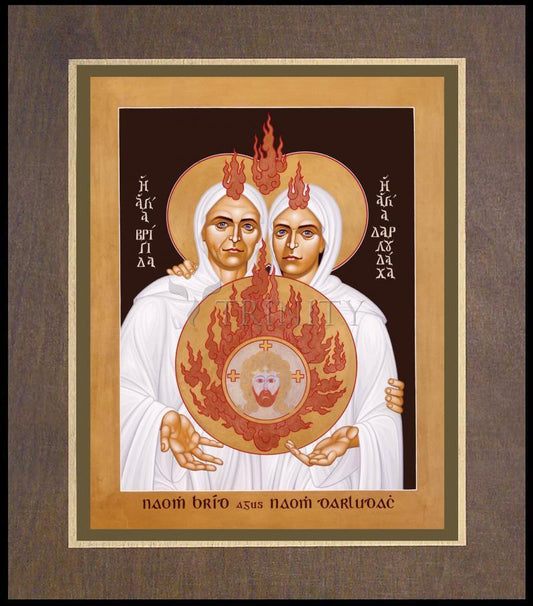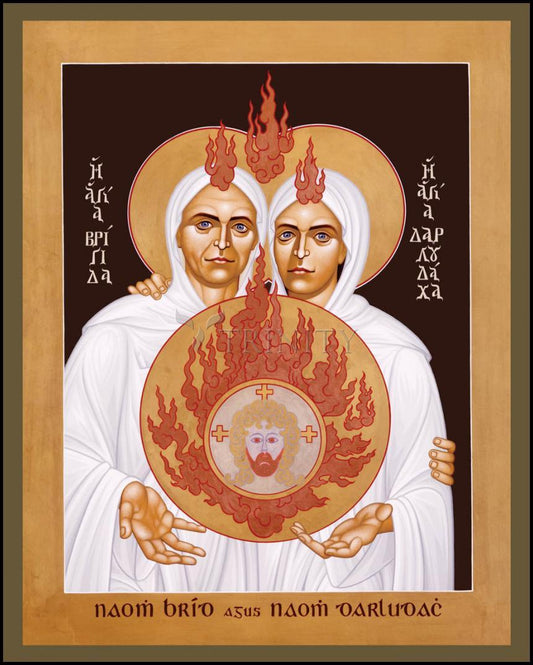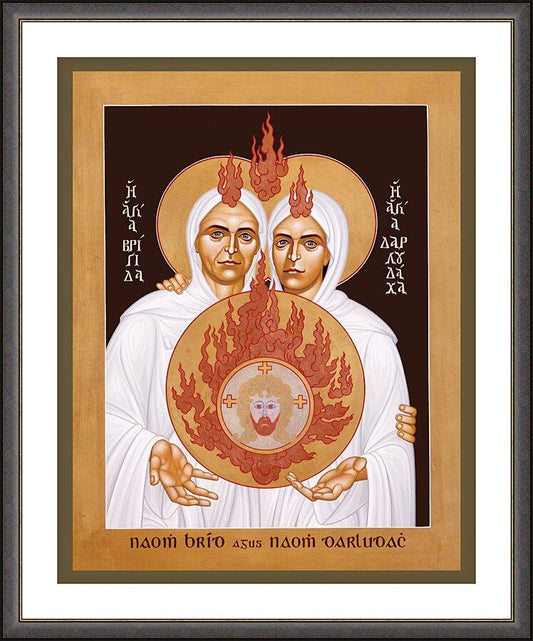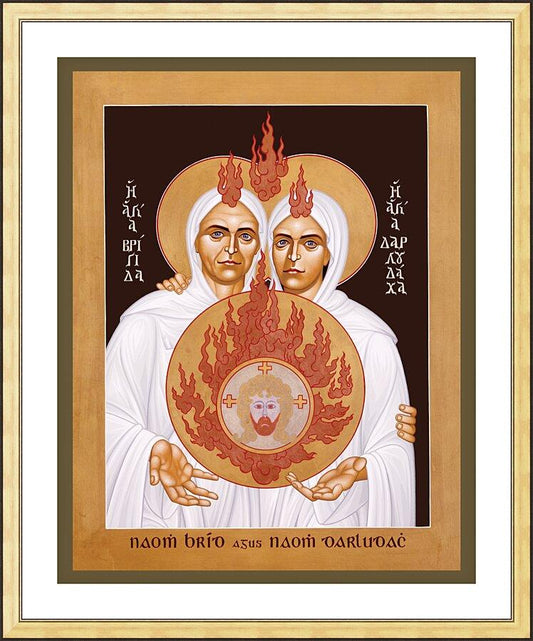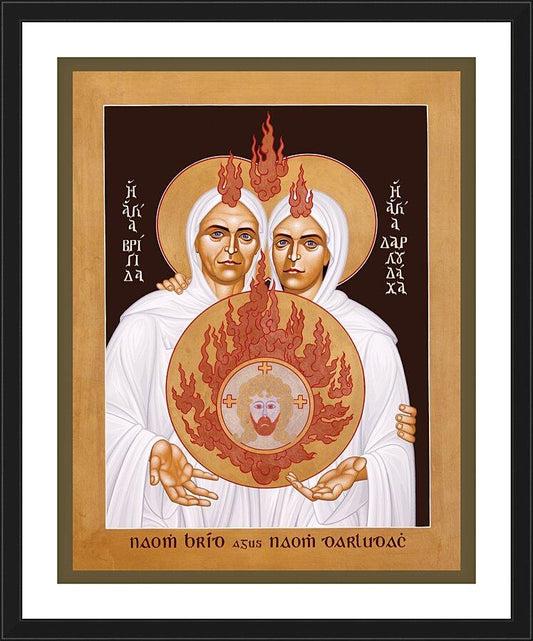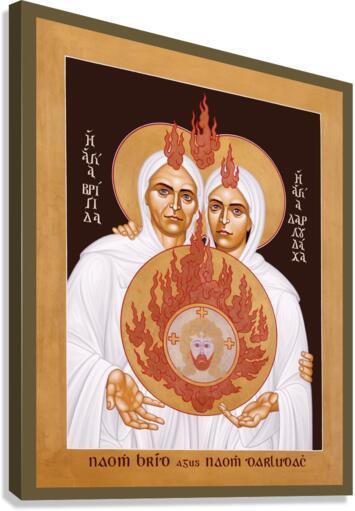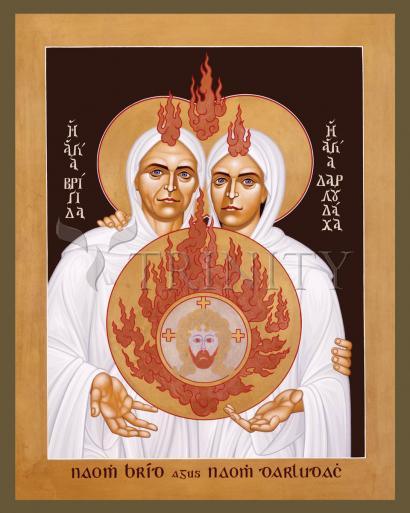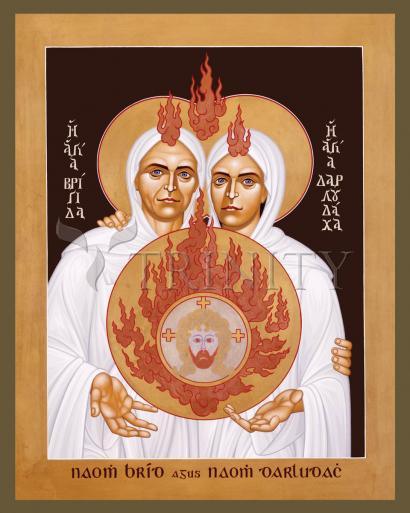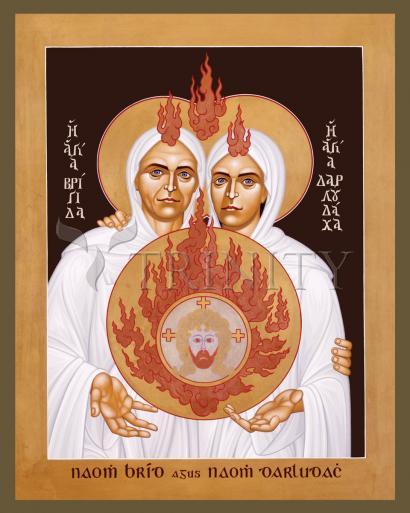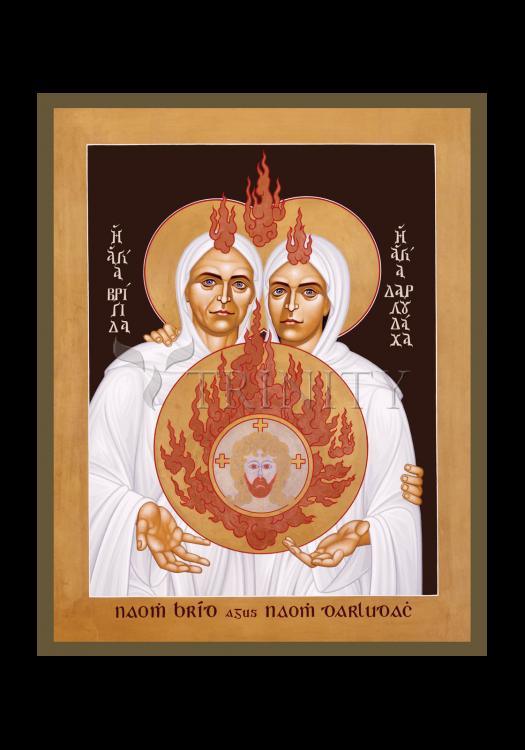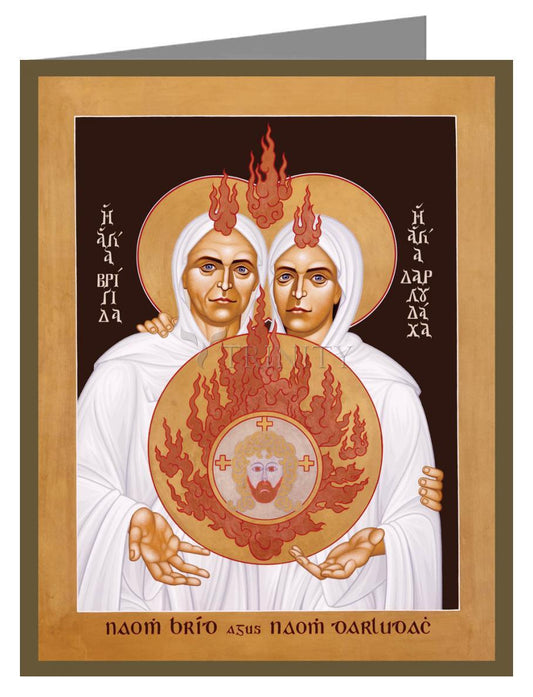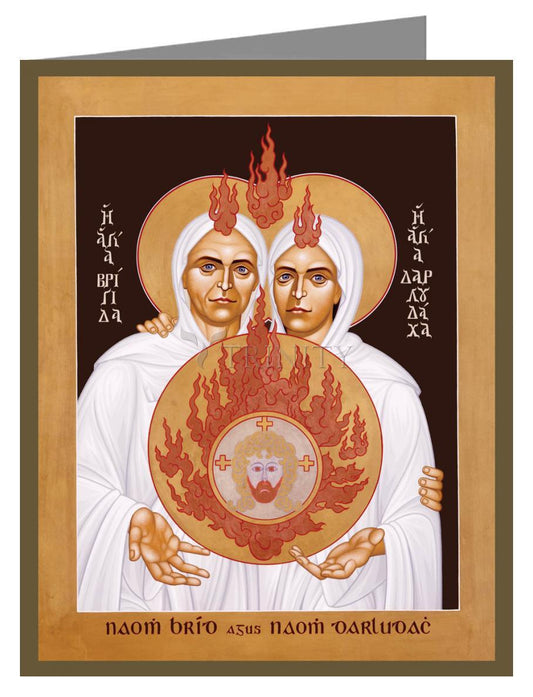ARTIST: Br. Robert Lentz, OFM
ARTWORK NARRATIVE:
In the pre-Christian period of Celtic history, Brigid was one of the most beloved goddesses. Each solar and lunar, she guaranteed the fertility of fields, sheep, cows, and human mothers; and she protected all bodies of water. Her principal symbol was a perpetual fire, representing wisdom, poetry, healing, therapy, metallurgy, and the hearth.
St. Brigid (Bridget, Bride, Efraid) is the most famous woman saint of Ireland. She was revered for her charity, miracles, and lavish hospitality. Some writers theorize that she may have begun her life as the last high priestess of Brigid. Such previous authority would help to explain why, in some of her “Lives”, St. Mel, Bishop of Ardagh, is said to have ordained her a bishop. When questioned about doing this, Mel responded that she alone of the abbesses of Kildare would be a bishop; but her successors would continue to have a bishop’s jurisdictional authority. Indeed they did. The other Irish bishops customarily sat at the feet of Brigid’s successors, until the Synod of Kells ended this custom in 1152. Brigid’s double monastery at Kildare was built at a location previously sacred to her divine namesake. It had a perpetual fire which was kept burning by the nuns in St. Brigid’s memory, until it was extinguished in 1540 as part of Henry VIII’s desolation of the Monasteries. In 1993, two Brigidine sisters returned to Kildare and relit the fire, which burns to this day at the Celtic Spirituality Center they established there.
Brigid was one of the many Celtic saints who insisted that a vital component of the spiritual life is having a soul friend (anam cara). Her own dear friend was the younger nun Darlughdach, a close companion who shared her hearth and her bed and once functioned as her ambassador to the Pictish King Nechtan. When Brigid told her that she expected to be dying soon, Darlughdach begged that they might be allowed to die together. Brigid responded that she would outlive her by one year and succeed her as abbess. After this they would be reunited in heaven. Brigid died in 525 on February 1st the date of Imbolic, the annual festival of goddess Brigid. Since Darlughdach died exactly one year later, they share the same feast.
Their names are in Greek on the icon and in Irish on its frame. They are tonsured in the Celtic style, from ear to ear forward, rather than on the crown of the head. They are dressed in the white worn by Celtic nuns, and by druidesses before them. Since fire is the symbol of Northern Sophia (Wisdom), the mandala on the breast of the saints contains a flame and a face of Christ evocative of the Book of Kells. This represents Christ/Holy Wisdom, whose divine Love inflames them, consumes them, is the bond between them and a gift they bestow. The three flames above them are also a reminder that the pre-Christian Brigid was a triple goddess whose blaze represented the spiritual fires of poetry, healing, and metal-craft. Thus it is appropriate that parts of the icon are painted with copper, silver, and three different karats of gold.
Her feast day is February 1.
Read More
Brigid was one of the many Celtic saints who insisted that a vital component of the spiritual life is having a soul friend (Anam Cara). Her own dear friend was the younger nun Darlughdach, who slept with her and sometimes functioned as her ambassador. When Brigid told her that she expected to be dying soon, Darlughdach begged that they might die together. Brigid responded that she would outlive her for one year, in order to succeed her as abbess. Ancient accounts show that their souls were so connected even after death that Darlughdach outlived Brigid by exactly one year.
Anam Cara refers to the Celtic spiritual tradition of souls connecting and bonding. When you connect with another person and become completely open and trusting with that individual, your two souls begin to flow together. Should such a deep bond be formed, it is said you have found your Anam Cara, your soul friend.
According to John O'Donahue, an accomplished Irish poet, philosopher and Catholic priest, ""You are joined in an ancient and eternal union with humanity that cuts across all barriers of time, convention, philosophy and definition. When you are blessed with an anam cara, the Irish believe, you have arrived at that most sacred place: home."
Born: 453 at Faughart, County Louth, Ireland
Died: February 1, 523 at Kildare, Ireland of natural causes; buried in Downpatrick, Ireland with St. Patrick and St. Columba; head removed to Jesuit church in Lisbon, Portugal
Name Meaning: Fiery arrow (= brigid)
Also known as: Bride; Bride of the Isles; Bridget of Ireland; Bridget; Brigid of Kildare Brigit; Ffraid; Mary of the Gael



